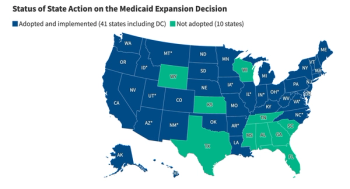
Medical home's promise difficult to determine
Once considered a great way to expand care, the medical home could use a dose of reality.
It doesn't take a math whiz to figure out that a population with baseline costs of $114 million probably isn't going to generate $250 million in savings.
"North Carolina Medicaid is lying about its savings numbers," says Al Lewis, executive director of the Disease Management Purchasing Consortium and MHE editorial advisor. "In reality, costs went up. This has huge implications for the HMO industry-which has a lot to lose if statewide medical home models take over for Medicaid HMOs-and the feds, who are pushing this model on states with a 9-to-1 match."
SERIOUS LEAP OF FAITH
The big question comes down to the methodology for evaluating medical homes. It is exceedingly difficult to measure things that didn't happen, such as an inpatient admission that was avoided. Historic claims data might be used to forecast utilization and outcomes, which might then be compared to actual results. However, this is not the best way to measure.
In fact, the Agency for Healthcare Research and Quality (AHRQ) specifically indicates that comparing the before and after data is the least desirable way to evaluate a program's success.
As medical homes are heralded for future investment, private plans must gauge their value, knowing there might never be a foolproof way to measure the financial return. AHRQ and the National Committee for Quality Assurance (NCQA) are working hard to create standards for evaluating the quality of medical home models.
Everyone wants medical homes to be successful because they sound like such a good idea. Who wouldn't be optimistic about patients having better access to care and more preventive services?
More than 3,000 practices have been recognized as medical homes by NCQA with more on the way. Payers are offering added financial rewards to practices that gain such recognition, undoubtedly assuming that the emphasis on primary care will be offset by lower costs for inpatient admissions and ER use.
From the provider perspective, the opportunity to deliver care more comprehensively with the help of a multidisciplinary team that is paid for its services has merit. Quick emails and other "nonvisit" services-which are reimbursed-help to make the daily office routine a bit less grueling. These are all good things.
But the added burden of quality reporting can be a turnoff as can the expectation of evening and weekend office hours. Smaller practices are unlikely to have the technology or the clinical staffing needed to extend the physicians' impact with patients.
Some believe medical homes are nice, value-added services that benefit the patient. They might save some money for certain populations, but how much and over what period of time is uncertain.
In the real world, medical homes on their own are not the slam dunk we all hoped they'd be. If you can live with that, then you'll continue to support the model, albeit with caution.
Julie Miller is editor-in-chief of MANAGED HEALTHCARE EXECUTIVE. She can be reached at
Newsletter
Get the latest industry news, event updates, and more from Managed healthcare Executive.





















































